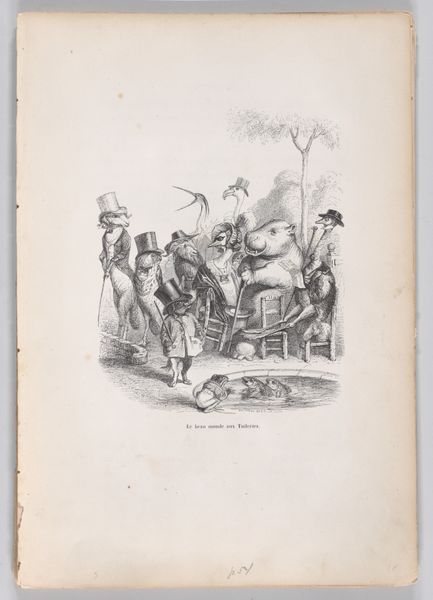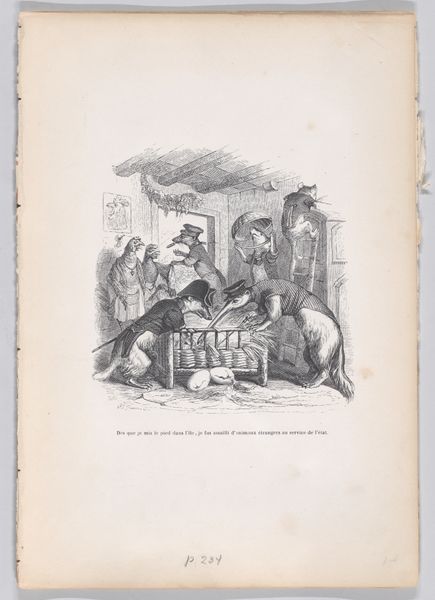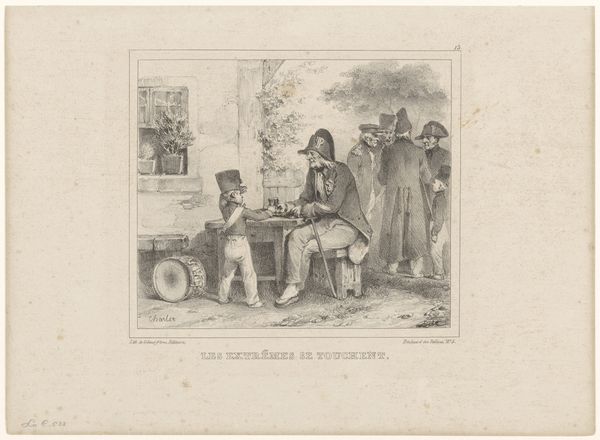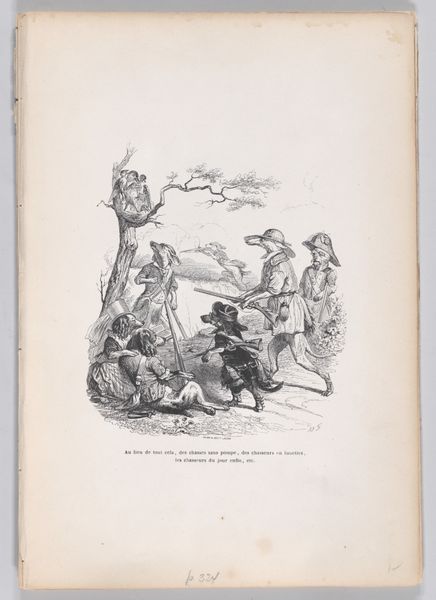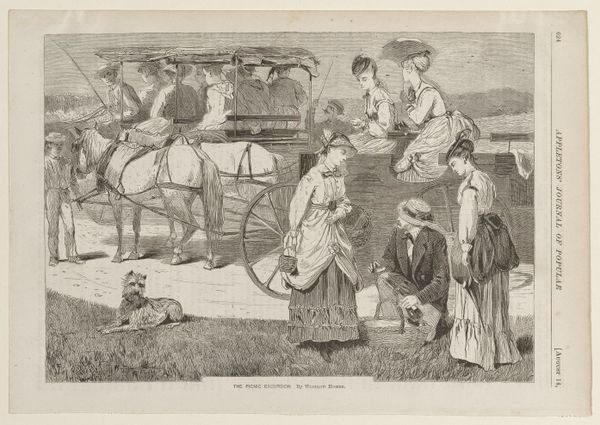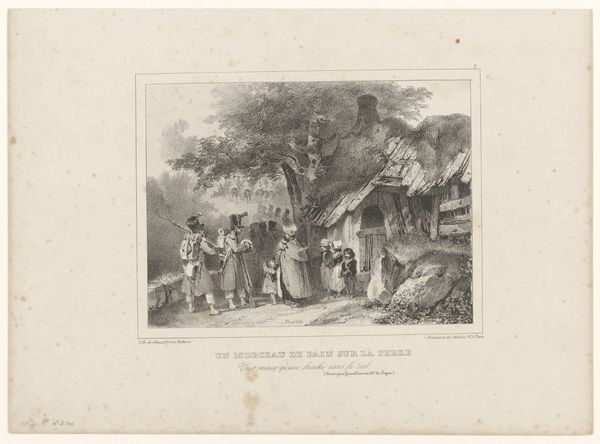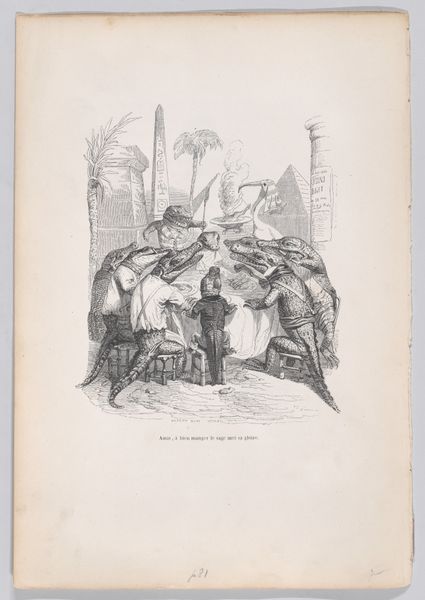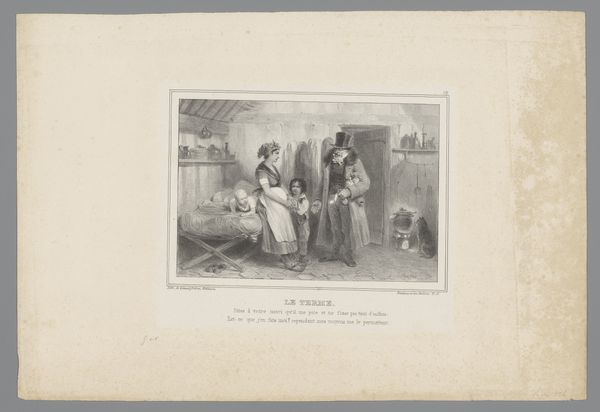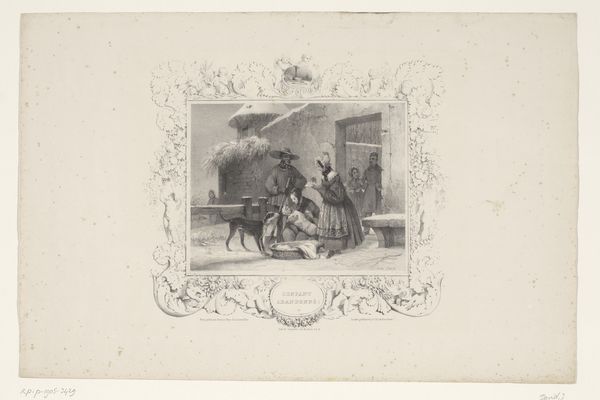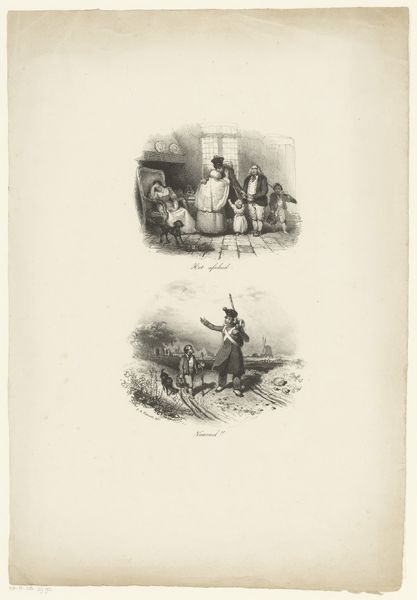
lithograph, print
#
lithograph
# print
#
caricature
#
figuration
#
romanticism
#
line
#
genre-painting
Dimensions: height 363 mm, width 244 mm
Copyright: Rijks Museum: Open Domain
Curator: Charles Jacque created this lithograph, titled "Groep kinderen lacht een geblesseerde jockey uit", or, "Group of children laugh at an injured jockey", in 1843. It seems to present a rather satirical commentary on the plight of this figure. Editor: Indeed. My immediate impression is one of stark contrast. The delicate, almost frantic linework contrasts with a darker subject matter. It's busy, almost overwhelming to look at initially. The cluster of figures seems to vie for my attention with an element of underlying anxiety. Curator: A fair observation. If we analyze the composition structurally, the diagonal slant of the injured jockey and horse guides the viewer's eye toward the cluster of children. The figures appear crammed within the frame, heightening the sense of chaos and disturbance. This deliberate manipulation of space, combined with contrasting densities of the linework, creates a dynamic push and pull. Editor: Beyond the structure, consider the potent symbolism at play. The jockey, representing perhaps status and control, is now vulnerable, wounded. He has clearly lost face in front of the group of taunting children. The act of ridicule itself becomes a symbol for the fragility of social hierarchy and the swiftness of its reversals. Curator: Quite. The children's gestures amplify this reading; their outstretched arms, pointing fingers, their gesticulation—are all external manifestations of internalized societal judgements. This artwork deftly exposes the underbelly of society's mechanisms and the collective will of an apparently innocent, or perhaps ill-behaved, group. Editor: Looking at it through that lens, the laughter loses its innocence and turns into something darker—a collective shaming, echoing historical rituals of public humiliation and other related events. The image also subtly questions whether there are situations when that behavior would seem acceptable or even encouraged in response to societal failings, like war, famine, plagues, corruption, abuse, et cetera. It appears as though that underlying social phenomenon has remained fundamentally unchanged over the ages. Curator: A striking interpretation. By deconstructing the work through a semiotic approach, it's fascinating how what initially appears to be a lighthearted genre scene transforms into an evocative investigation of the deeper workings of society, judgement, and societal expectation. Editor: It's a poignant demonstration of how visual culture preserves the past and ensures that history continually revisits our consciousness in novel guises.
Comments
No comments
Be the first to comment and join the conversation on the ultimate creative platform.

